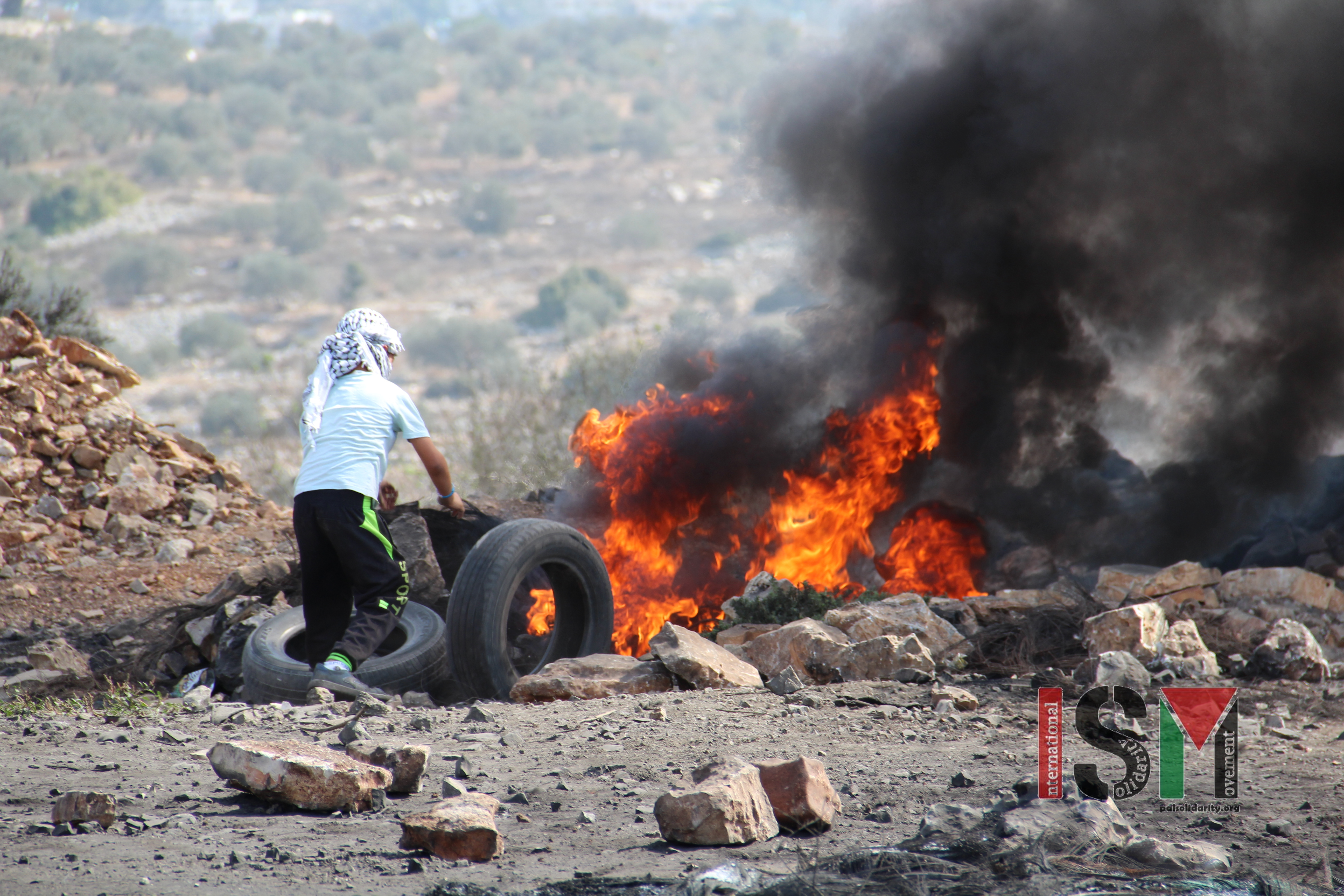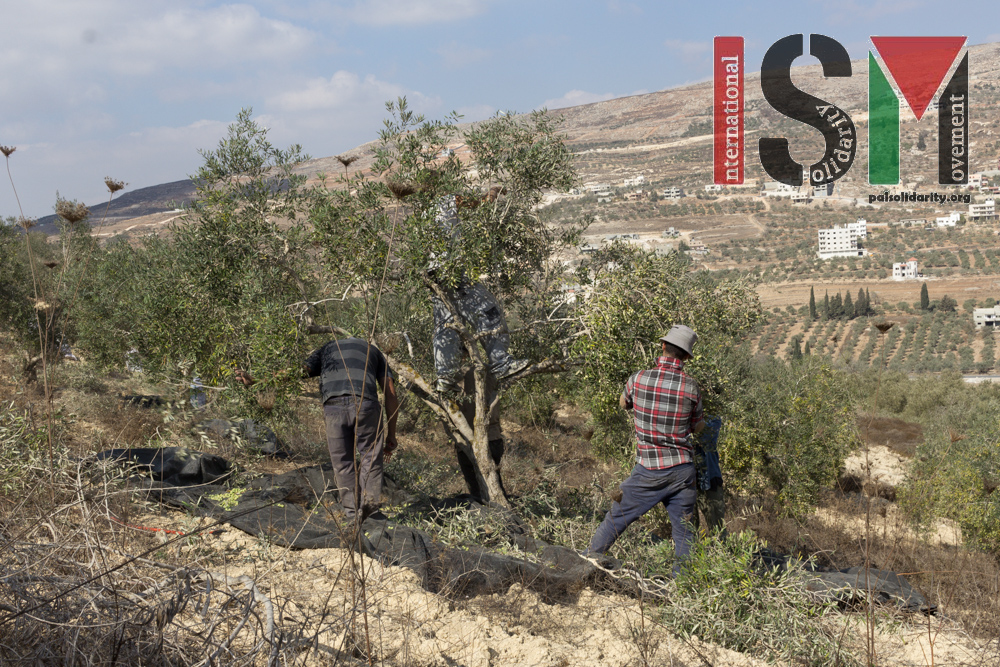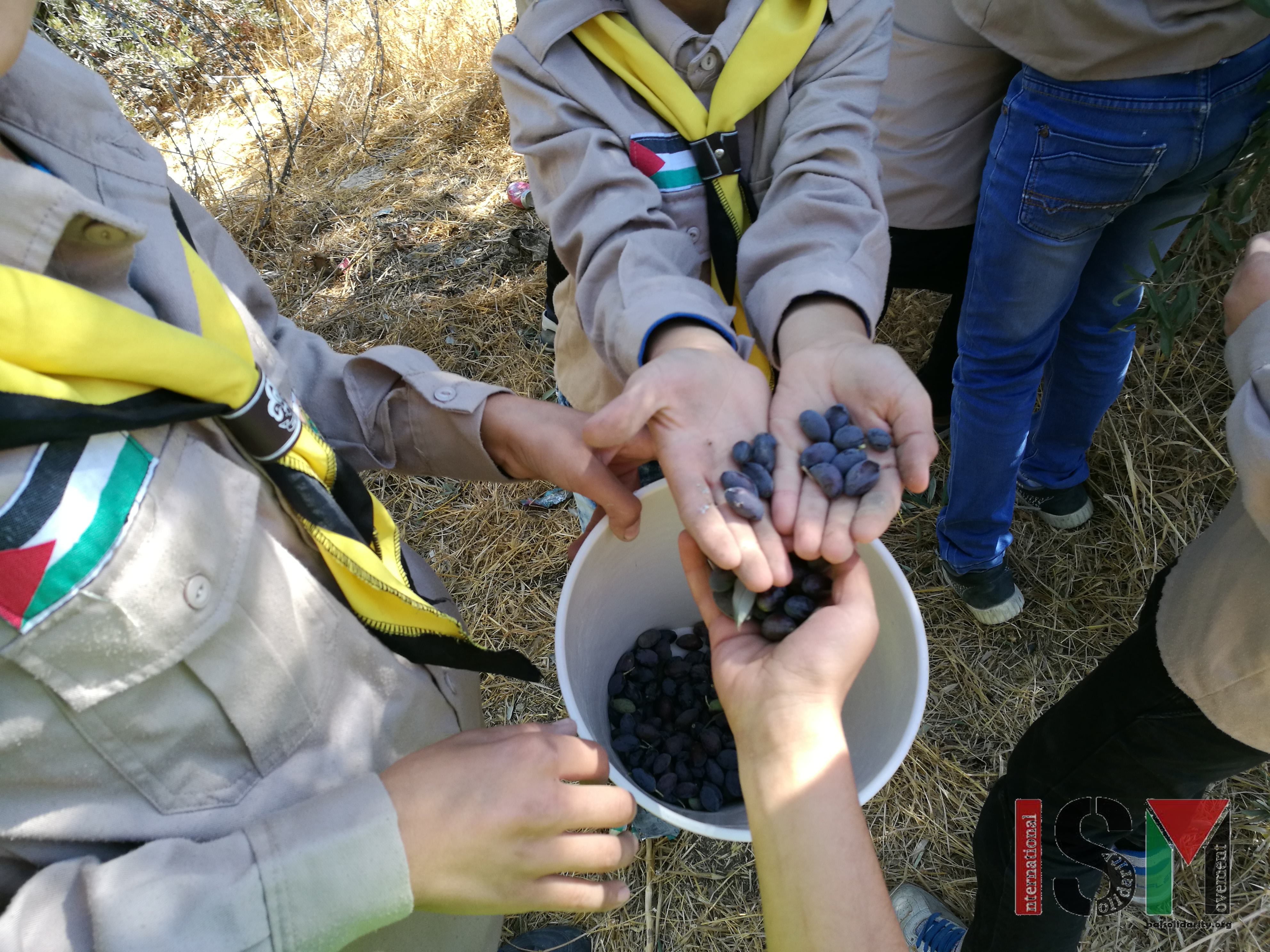Tag: Settlement
-
Kafr Qaddum: Peaceful people under violent occupation
25th October 2016 | International Solidarity Movement, al-Khalil team | Hebron, occupied Palestine Last Friday I attended a demonstration in the small town of Kafr Qaddum, situated in the Northern region of the West Bank, just west of the city of Nablus. In 1974 Israel began to illegally erect settlements in the nearby Keddumin area.…
-
Protective Presence at Burin olive harvest
24th October 2016 | International Solidarity Movement, Nablus-team | Burin, occupied Palestine Today, international activists joined members of the Najjar family from the village of Burin to harvest their olives and provide a protective presence should settler colonists or Israeli forces attempt to attack and disrupt the harvesting. Thankfully, there were no violent incidents todayand the…
-
Settler attacks school-children and orders soldier to assist her
24th October 2016 | International Solidarity Movement, al-Khalil team | Hebron, occupied Palestine On Monday morning, infamous Israeli settler Anat Cohen attacked a group of school-children harvesting olives near their school in occupied al-Khalil (Hebron). She then ordered the soldier to not only evict the students and teachers from the area, but assist in her…



